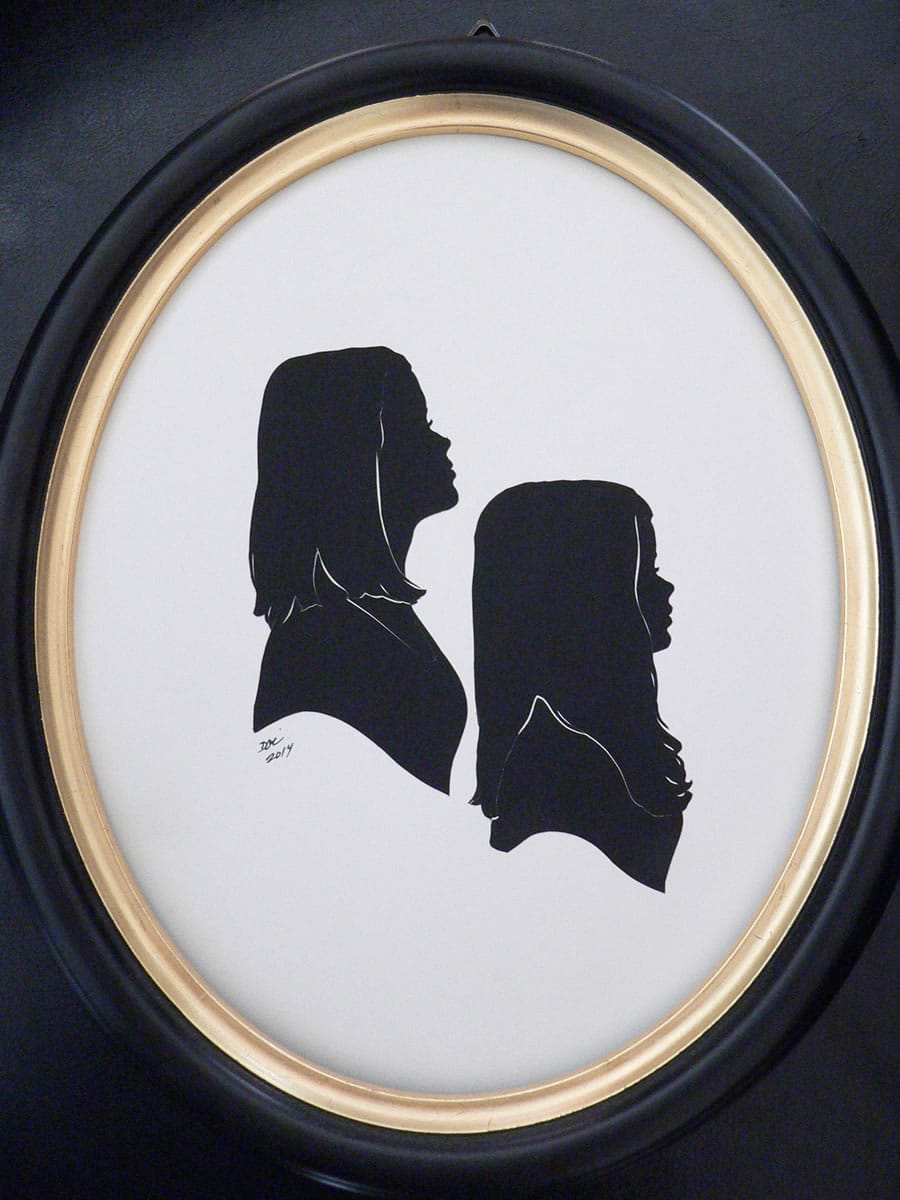The silhouette, an ancient form of portraiture, may be dying. Only a handful of artists have learned to cut these precision profiles — traditionally clipped from black paper and mounted on a white background — that were popularized in the 1800s in Europe and the United States.
In recent decades, the art form continued at amusement parks and department stores, where parents would have their children’s youth commemorated in profile.
Those options remain — and nonprofessionals can craft children’s profiles using less intensive methods. But traditional silhouette artists, who create profile portraits by eye, not tracing along the lines of shadows or photographs, say their numbers are dwindling.
This worries Deborah O’Connor, a Westerly, R.I., silhouette artist.
“A lot of people don’t know what it’s about anymore,” says O’Connor. “To most people it looks very difficult. It really has dwindled down to maybe there’s a dozen — maybe fewer — in the United States who are out doing it.”
The pay can be good for those willing to pick up a scissors and travel, says Erik Johnson of Charlotte, N.C., who learned the art form from his father when he was 10 and has been a professional silhouette artist for nearly 20 years. But expenses can be high, and it’s physically demanding.
Johnson often travels 50 weeks out of each year to ply his trade, cutting profiles at children’s boutiques, toy stores, museums, weddings and private parties.
“Silhouette artists have always been itinerant travelers,” says O’Connor, who chose a more sedentary career when she opened the South County Artisan’s Loft at The Fantastic Umbrella Factory, an artists’ haven and shops in Charlestown, R.I. She’s been in the business for nearly 40 years, including thousands of practice hours cutting silhouette portraits at Disneyland in Japan in 1999.
And that’s what this art form takes, say those doing it: artistic ability plus hours of practice.
“You have to be able to draw with scissors,” says Cindi Rose, a Houston-based silhouette artist for more than 40 years. “You have to really look and measure the (subject’s) features.”
In the 1800s, the silhouette was the poor man’s portrait, says Rose, and then it caught on among the wealthy.
“It became a rage,” she says. “It became party entertainment.”
Today, a silhouette provides a charming countermeasure to the “selfie” and other techie portraiture.
Clients are mesmerized by an artist’s ability to capture profile features with a few scissor snips in minutes.
“When it’s right, it’s really right,” says O’Connor about capturing a profile. “People tell me, ‘It’s more real than me.’ You feel as if the artist must have known that person deeply, but that’s not the case. You’re following a line and what comes out is this one person — nobody else.”
“The cutting isn’t even the amazing part,” says O’Connor. “What’s amazing is how well it works as a portrait.”
That fine detail notwithstanding, anyone can try their hand at silhouette portraiture. Elementary-school teachers have been doing this for years — using a light projector to cast a child’s shadowy visage onto black paper taped on a wall.
Crafting and do-it-yourself sites, such as Martha Stewart Living and Lowe’s, have simplified the crafted silhouette even further. They provide instructions that use a photograph rather than a restless child, and innovative supplies, such as patterned paper, paint and plywood.



